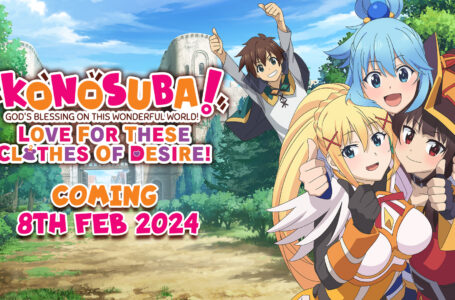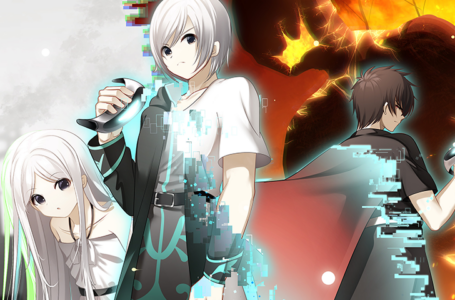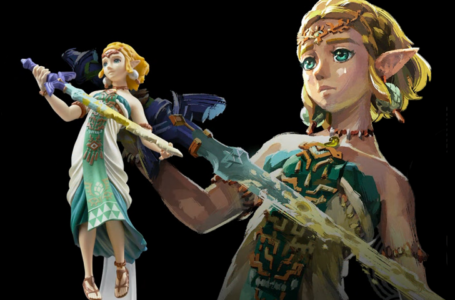Super Smash Bros. Ultimate Review (Switch)
You all know Super Smash Bros., that fighting game that a lot of people claim isn’t a fighting game where you can play as Kirby and wipe the moustache off Mario’s face with a hammer? Well, Nintendo have only gone and released Sakurai from the asylum he lives in to make another one – Super Smash Bros. Ultimate.
The basic gameplay is unaltered from previous instalments; you have your Attacks, Specials, Smash Attacks, throws and shield mapped to whatever button layout you wish in the options. You enter the stage and aim to launch your opponents off the screen, the characters will fly further and faster the higher their damage percentage. That’s not what we play Smash for now is it? Because if you’re playing it, it has got to be with weapons right?
A lot of the weapons you remember from the series are back, along with some new incredible additions to the repertoire. Notable amongst these are the ones that reference the new characters such as the wonderful Death’s Scythe from Castlevania, which will grant an instant kill if used against an opponent with a high percentage, or the hilarious troll that is the Fake Smash Ball, which explodes when broken.
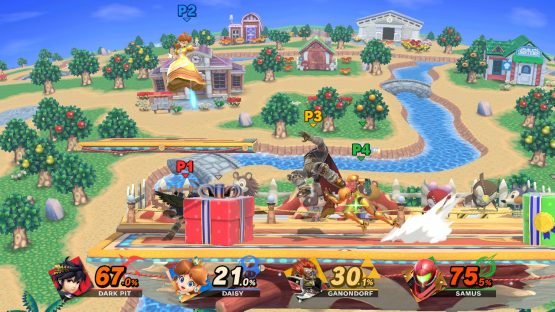
Super Smash Bros. Ultimate is quite honestly the strongest title to date, with a lot of refinements to the already tight gameplay found in the previous title in the series and buffed the entire experience to a shine. Every fighter returning, of which they all are, has seen some sort of refinement to balance them amongst the roster. This means that players old and new can jump in with a reasonable amount of the ground levelled.
The end result of the refinements, items, and roster is a game that just feels great to play, with every match having the same levels of frenetic energy you have come to expect just with the action feeling far more smooth. Super Smash Bros. Ultimate is at its best played with others, and there is no shortage of fun to be had here. Especially with the characters appearing randomly to be unlocked at regular intervals, which means that for the first hours, the fights are always fresh.
Don’t worry though, if you fail in defeating the character to unlock them, they will appear in the Challenger Approaching section of the Games & More menu. They will re-appear here from time-to-time to be challenged, so you can keep trying until you bring them down and add them to your roster. The difficulty of these encounters was occasionally excessive, looking at you Wolf, but was undeniably satisfying if you won.
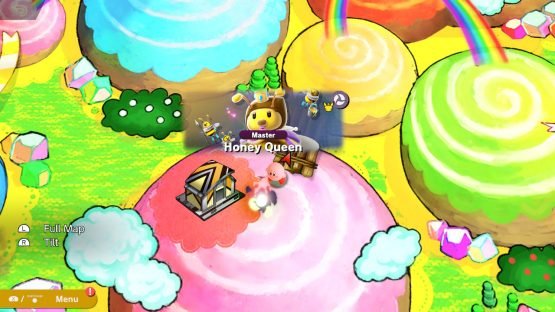
The feeling of fun in the game is only increased by the ability to create your own rulesets in Smash Mode. You can fine-tune all of the minutiae of the fights, give them their own names that you can use to refer back to (like my Smoosh ruleset that is 3 stock, unlimited time, and Final Smash meter active), so you can jump into the aforementioned fun with far less messing around than before.
Where my love of this game starts to wane is, unfortunately, in the Adventure Mode. This mode sees the player wandering a ruined world as Kirby, unlocking new characters to use in the mode, Spirits to bolster your abilities, and discovering new areas. Initially this world is quite small, but clearing battles with Spirits will cause the thick clouds to be dispersed, revealing more Spirits and fighters to battle and unlock.
The stipulations in this Mode is that each Spirit will affect the fight in different ways. This can include defense and strength buffs to your opponent, changing the battle type itself, or adding a status effect to the stage. The great thing about these is that the rules of the fight will be heavily inspired by the Spirit, making for some interesting matches; for instance, a bunch of tiny Incineroar representing Red Pikmin.

However, the downside of this is that there are some incredibly cruel combinations, which obviously has the potential to lock out portions of the entire mode through excessive difficulty. As a positive, most of this can be overcome by lowering the difficulty if you need to, but even then battles like the one against Yarn Yoshi come along and mess with everything. You can counterbalance some of the terrible effects by equipping Spirits of your own, or levelling them up, but these things can only help so far.
Also, considering that there is an automatic selection option that does not work properly and will only make your Spirit grouping advantageous in terms of type but won’t select anything to negate any stage effects or anything, which is deeply frustrating to me personally pretty much undoing the point of having it. However, this is an incredibly minor nitpick, more of a frustration.
Despite a fantastic premise and a great initial set-up, with one of the most brilliantly dark opening cutscenes Nintendo have ever done (EVERYONE IS DEAD!), my lasting impression of the mode is one of disappointment. This could have been fantastic, and in parts is an enjoyable experience, but is heavily tarnished by some of the most frustrating moments that can be found in the entire game.
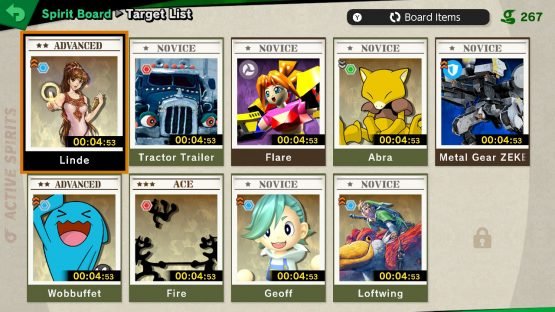
Luckily, there is another place to acquire Spirits, and that’s in the Spirit Board. This is a set of encounters that are updated constantly on individual time limits. These allow you to engage the Spirits with any character you have in the main game with any set of Spirits equipped, to gain the chance to acquire it for your collection, ending with a little mini-game in which you shoot the Spirit in question, which is occasionally tremendously exciting.
This isn’t all though because you can summon Spirits too by dashing unwanted Spirits against the rocks to merge them into new wonderful ones, or enhancing them past max level. In fact, some of these are only obtainable through this method, and you will want to get them all if just for some of the references. In fact, there wasn’t a period playing this game in which I wasn’t grinning from some obscure reference to a little-known title I love.
It’s not only Spirits and Smash though, with Classic Mode returning exactly as you might remember it being, and the various Mob Smash modes make a return too. These, and all of the other modes, are supported by a far more robust Training Mode than previous titles. In this way, Ultimate continues the series mainstay of having a fantastic array of activities for solo players as well as being the fighting party game the series is known for, which makes up for Adventure Mode with me.
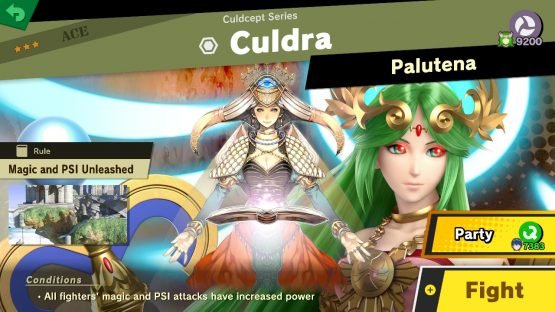
Sadly, this is slightly dampened by the online, which is inconsistent to say the least. Not only are the preferred rules a little redundant, as you will more than likely be thrown into pretty much the entirely opposite type of match, but also the net code itself seems to have a high amount of lag (likely owing to the Switch itself more than the game). As such, although I have played online, i would not recommend it and hope that it improves in the future.
There is simply a staggering amount of content in here, which is genuinely incredible if simply because I genuinely believed that the amount of content in Super Smash Bros. for Wii U was unbeatable. Between the characters, the stages, the music, and the tremendous amount of Spirits, there is just so much to unlock and see or hear. This definitely qualifies as an evergreen title for Switch if there ever was one and one I’m unlikely to delete from the console.
Aesthetically, Super Smash Bros. Ultimate looks utterly incredible, with the entire roster lovingly re-rendered, and all of the stages we know and love receiving a fresh lick of paint. The game looks gorgeous in motion, and all of the little touches and flair added to this iteration makes it more visually impressive than any game before. Even the user interface has had a overhaul, looking cleaner and more informative.
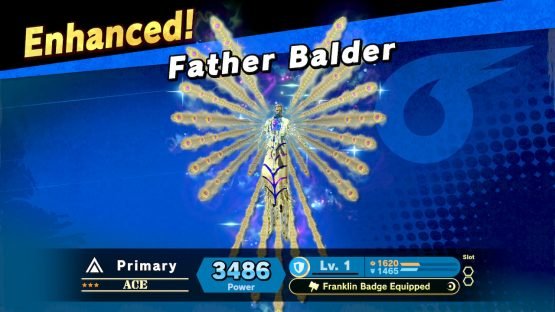
The sound design is absolutely top notch, easily bettering pretty much any title that is currently in circulation, even if that is solely owing to the sheer volume of music. Found in the Vault is the largest collection of franchise music I’ve ever seen, spanning 30+ years of Nintendo history along with classics and remixed versions of songs from Sonic the Hedgehog, Final Fantasy VII and Castlevania.
Couple this with the ability to listen to any songs you have whenever you wish (even while the console is in sleep mode), make playlists of you favourite songs, and even unlock more, and you have possibly the most comprehensive music library in gaming history. Then sprinkle in a liberal amount of of crisp sound effects and sound cues, and you have the absolute aural delight that is Super Smash Bros. Ultimate.
The truth is that Super Smash Bros. Ultimate is the best game in the series by a long stretch. With some fantastic touches to rebalance the roster, some great new characters, and a lot of incredible nods to franchises old and new, Ultimate truly lives up to the name. If it weren’t for the lacklustre experience I personally had with the Adventure Mode, this would have all too easily nailed a max score.
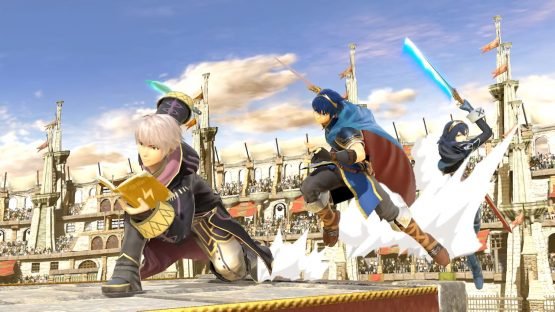
As it stands, I cannot give it a clean slate, but I can insist that absolutely everyone who owns a Switch should play this. Played offline, with a group of friends is more fun than it has ever been, with the biggest and most exciting roster ever, and a whole host of new and returning items to keep the action as chaotic and unpredictable as ever. If you only get one title for the festive season, it should be this.
Have you got Super Smash Bros. Ultimate? Who is your main in the game at the moment, or who are you gravitating to the most right now? Let us know in the comments, or on Twitter and Facebook, and check back for more coverage of games like this and other Japanese titles.
- New Persona 5 Royal Trailer Introduces Kasumi And Special Edition Revealed - June 6, 2019
- New Bloodstained: Ritual of the Night Character Revealed Ahead Of Release - May 31, 2019
- Final Fantasy XIV: Shadowbringers Preview - May 29, 2019



